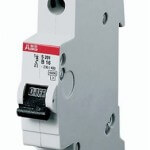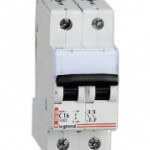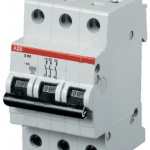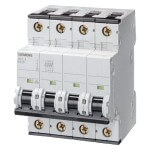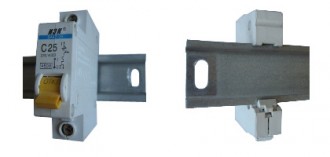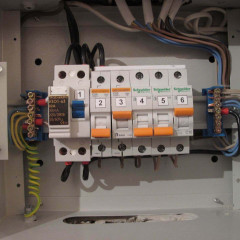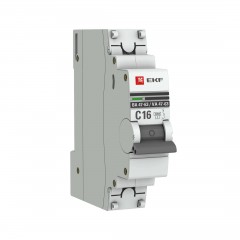What is a circuit breaker and what is it for?
Appointment
First of all, we will understand what a circuit breaker (AB) is. The machine is a protective device that cuts off electricity in a certain section of the wiring for the following reasons:
- short circuit occurrence;
- network congestion;
- power surges.
In addition, this device can be used to “relieve” voltage on a specific section of the wiring by means of an operative shutdown (the event is extremely rare).In simple words, the purpose of a circuit breaker is to protect electrical appliances when wiring fails.
As for the scope of automatic machines, it is possible both in domestic conditions (protection of houses and apartments), and in industrial enterprises. Circuit breakers are used in all areas of the electric power industry.
To your attention, a video lesson in which there is a full explanation of what a circuit breaker is and what is its operating principle:
Design
Today, there are many different products to turn off the current in the network. Each of the devices has its own specific design, so in this article we will consider an example with a modular machine.
So, the circuit breaker device consists of four main parts:
- Contact system (movable and fixed). The movable contact is connected to the control lever, and the fixed is installed in the housing itself. Power outage occurs by pushing the movable contact with a spring, after which the network opens.
- Thermal (electromagnetic) release. An element with which contacts are opened. A thermal release is a bimetallic plate that bends and opens the contacts. Bending occurs due to heating by current (if its value exceeds the nominal). This disengagement occurs at increased loads on the power line. The magnetic release is instantaneous due to a short circuit. Overcurrent provokes the movement of the core of the solenoid, which activates the mechanism of contact separation.
- Arc extinguishing system. This part of the machine is represented by two plates of metal, which neutralize the electric arc. The latter occurs when a chain break occurs.
- Control mechanism. For manual shutdown, a special mechanical lever or button is used (in other types of AB).
We also bring to your attention a more detailed design of the circuit breaker:

In this video example, the design and principle of operation of the machine are clearly provided:
Specifications
Any circuit breaker has its own individual characteristics, by which we select the appropriate model.
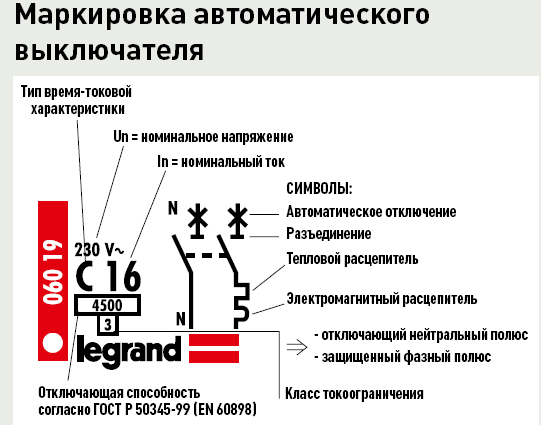
The main technical characteristics of the circuit breaker are:
- Rated voltage (Un). This value is set by the manufacturer and is indicated on the front panel of the device.
- Rated current (In). It is also set by the factory and represents the maximum current value at which the protection will not operate.
- Rated operating current of the release (Ipн). If the current in the network increases to 1.05 * Irn or 1.2 * Irn, the operation will not occur for some time. This value must be lower than the rated current.
- Short-circuit response time (short circuit). When a short circuit occurs, the machine turns off after a certain time the current flows through the device (response time). Also installed by the manufacturer.
- Ultimate switching capacity of a circuit breaker. The value of the passing short circuit currents at which the device can still function normally.
- Tripping current setting. If this value is exceeded, the device instantly trips and disconnects the circuit. Here the products are divided into 3 types: B, C, D. The first type is used when installing a long power line, the operating range is 3-5 rated operating currents of the release (Ir). Type C device operates in the range of 5-10 values and is used in lighting circuits. Type D is used to protect transformers and electric motors. Its range of operation is from 10 to 20 Irn.
General classification
I would also like to provide you with the most generalized classification of circuit breakers for the home. Today, products are usually divided according to the following criteria:
- The number of poles: one, two, three or four. Single-pole and double-pole circuit breakers are commonly used in single-phase wiring. The last two options are used for three-phase power supply.
- Type of drive. The device can be controlled manually (manual drive) or at a certain distance (electric drive).
- Presence / absence of current limiter. In the first case, circuit breaking during short circuit occurs faster, because a current limiter protects the wiring from the limits of the short circuit current.
- Type of release. The purpose and types of these structural elements of circuit breakers we have considered above. Once again we repeat that the electromagnetic release serves to protect against short-circuit currents, and thermal - from overload currents.
- Selectivity / non-selectivity of the product. This function allows you to adjust the response time AB.
- Way of fastening. Usually, the mount is represented by a retractable or stationary retainer. In the first case, AB is installed on a well-known to all electricians DIN rail (as shown in the photo), in the second case, the installation is carried out in the frame of the electrical panel.
Also, products can be classified by IP degree of protection, amperage, short-circuit current limit and method of connecting wires.
That's all you need to know about the device, the principle of operation and the purpose of the circuit breakers. We hope that the information has become useful to you and now you know how the machine works, what it consists of and what it is for.
Also read:

